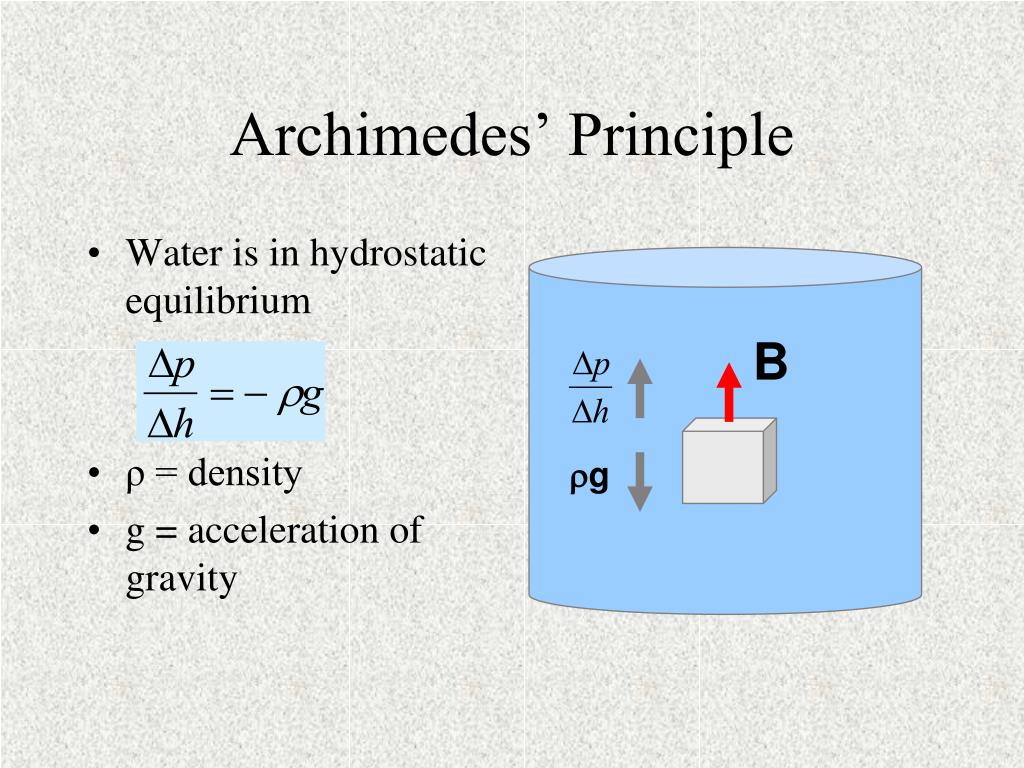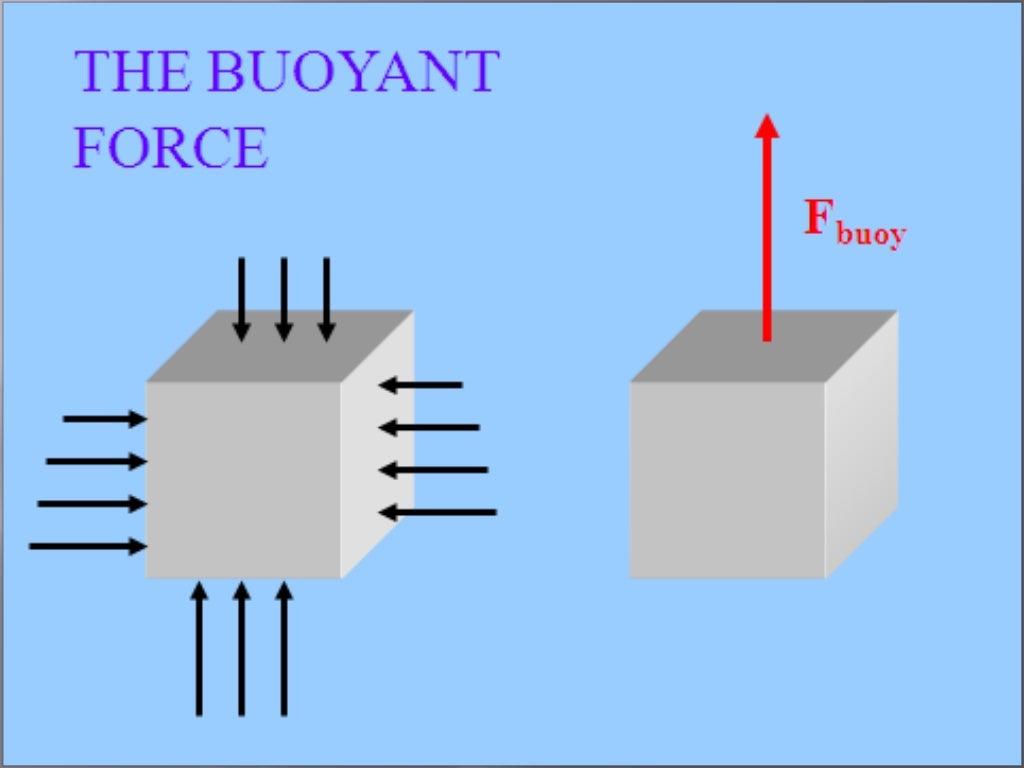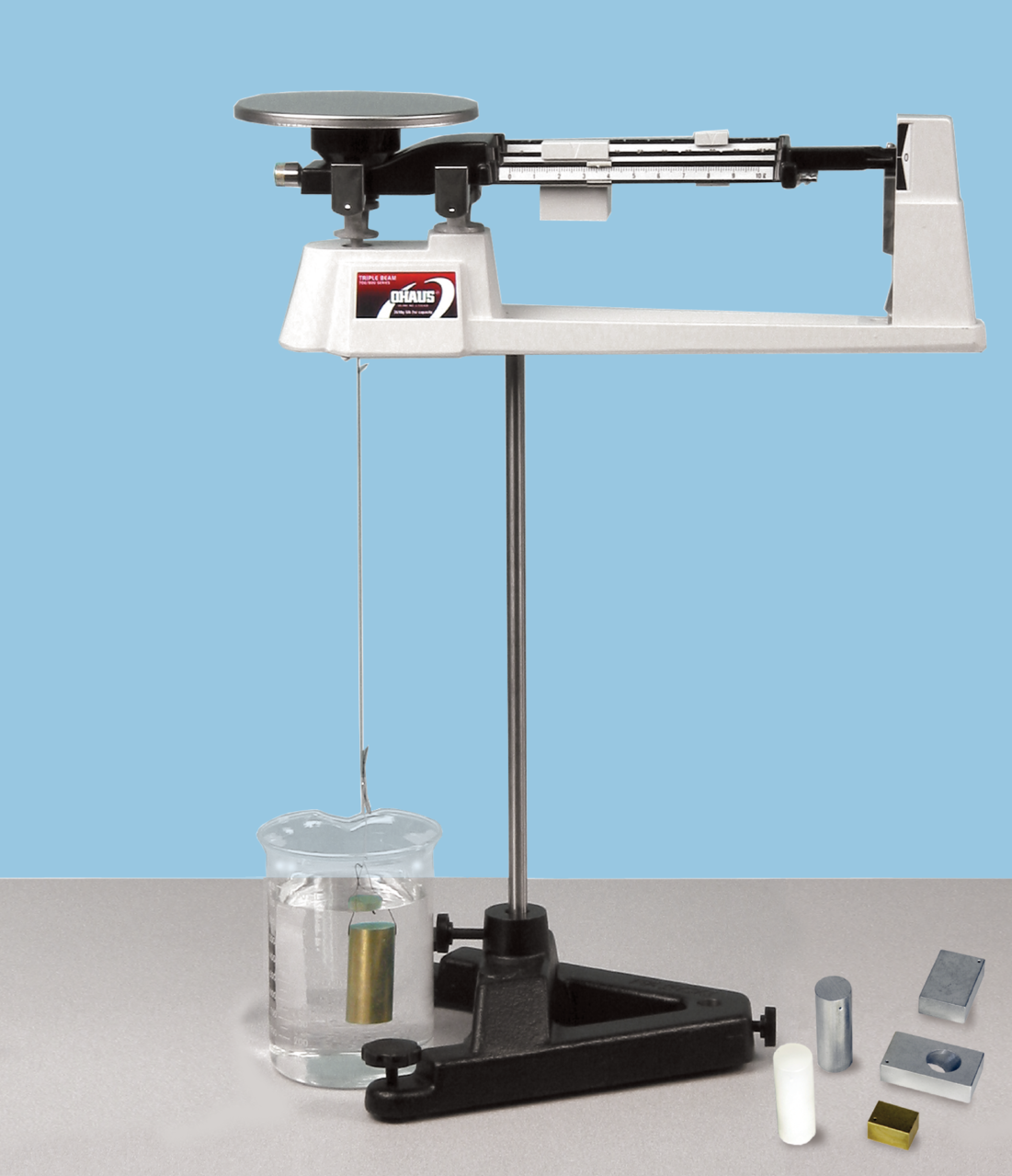

The density of the metal determined the buoyant force and therefore the apparent weight loss when submerged. Archimedes’ Principle Experiment Take a container filled with water to the brim.

#Archimedes principle how to#
CommentsĪrchimedes' original problem was to determine whether the king's crown was genuinely made of gold, and figured out how to solve the problem while taking a bath. The masses will probably need cotton loops tied so they can hang from the balance. Use to explain Archimedes Principle, that the buoyant force on an object submerged in a fluid is equal to the weight of the fluid that is displaced by that. Archimedes principle states that if an object is submerged in a fluid, then the buoyant force acting on it is equal to the weight of the fluid displaced by t. CALCULATION From the equation : FB wA wF According to experiment wA 640g, Wf 410g (by. Requirements are a 2 liter beaker, the two masses and a 20N spring scale. FORMULA OF ARCHIMEDES PRINCIPLE FB wA wF Where FB is again the buoyant force on the object, wA is the normal weight of the object measured in air (wA m g), and wF is the weight taken while the object is immersed in a fluid of density rF. The aluminum, having the lower density, experiences the greater upthrust and a reduction in weight from 10N to about 6N, compared to the brass whose weight drops to 8N. Each in turn is lowered into a beaker of water using a spring balance ( figure 1).

This demo compares the buoyant force acting on two 1kg masses, one of aluminum and one of brass. Archimedes Principle: When an object is imbedded in a fluid, it feels an upward (Buoyant) force that is equal to the weight of the displaced fluid. An object with equal mass but a lower density occupies more volume so displaces more water it therefore experiences a greater upthrust. From Archimedes’ principle it follows that bodies of equal volume will experience equal buoyant forces. This is known as the Archimedes’ principle. The buoyant force on a submerged object is equal to the weight of the fluid displaced. Let knowledge be the cure.Archimedes' principle states that the buoyant force or upthrust is equal to the weight of fluid displaced. Archimedes of Syracuse, in his book On Floating Bodies, written around 250 BCE, stated. Powered by django-wiki, an open source application under the GPLv3 license. How these two forces compare determines whether the object sinks or floats. Of course, as long as there is gravity (g), the object in the fluid always has the weight force pulling down on it, and the buoyant force pushing up on it. Uses and Applications of Archimedes Principle An essential application of the Archimedes principle is to measure the volume and density of irregularly shaped. For example, a solid metal ball and a hollow plastic ball, of the same volume, both held underwater experience equal buoyant forces. It is important to note that the only object property that affects the buoyant force is its volume - not what it is made of or its shape. In this work, we will develop this principle using.

This makes sense because that same volume of fluid was in equilibrium with its surroundings before the object was placed in the fluid (see Figure 1). Around 246 B.C., the Greek scientist Archimedes discovered that an object totally or partially immersed in a fluid, experiences an upward buoyant force F Bequal to the weight of the fluid it displaces.


 0 kommentar(er)
0 kommentar(er)
